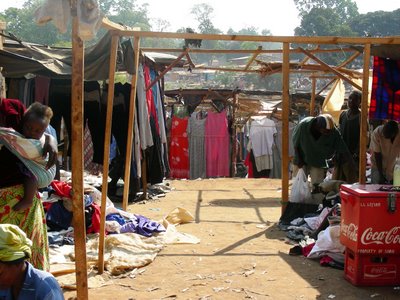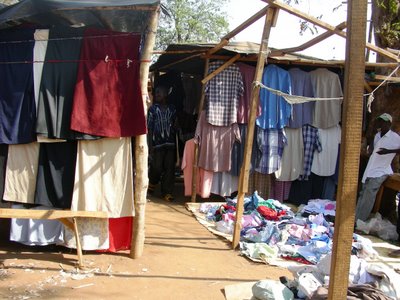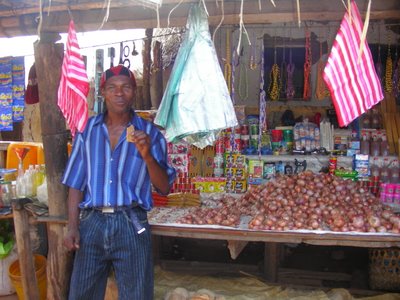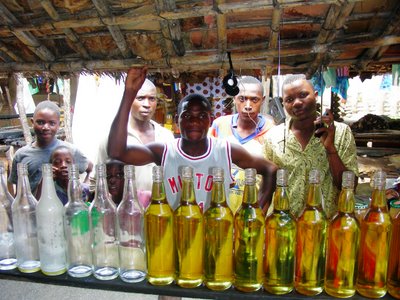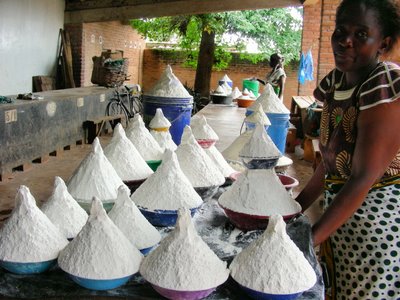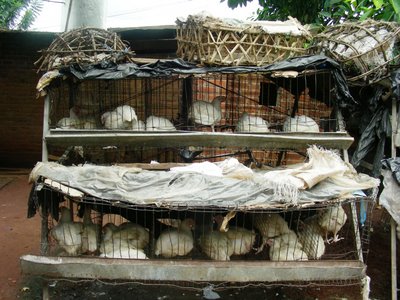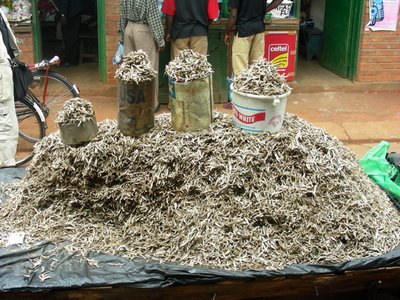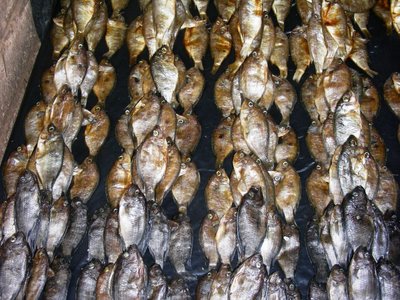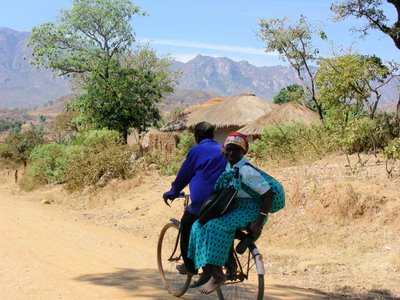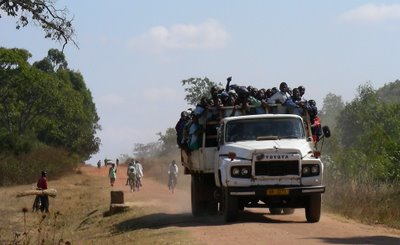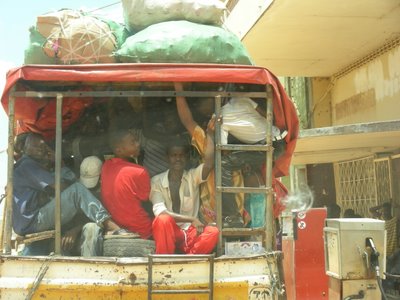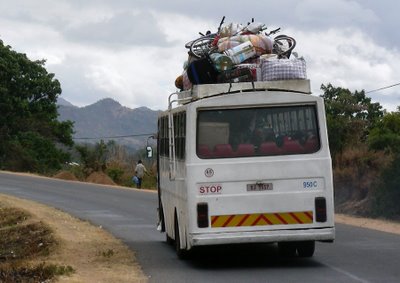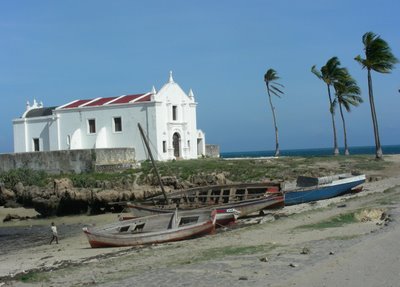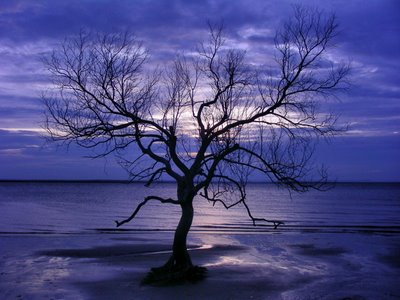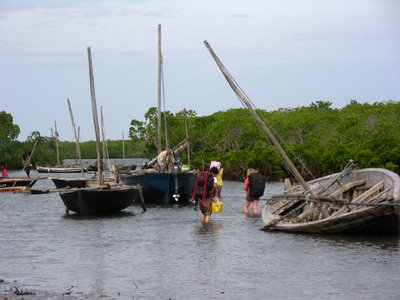Going to the market is always a fun way to spend a morning or afternoon. This is were you find the best selection of vegetables and fruit and beans and nuts and clothes and shoes and anything else you may desire. The produce is from local farmers and is always fresh. The larger towns have the best variety of produce where the smaller villages are lacking and you may find only onions and tomatoes. Spices, such as ground chili powder, ground ginger powder, curry powder, turmeric, whole ginger, garlic and chilies are also available and inexpensive. For the weekends when I did not get out of town, I really enjoyed heading to the markets and exploring all they had to offer. Oh I will miss these markets when I leave!!
The second-hand clothes are provided mainly from the States and I half expect to see some of my old clothes that I gave away to Goodwill before I left. You can find almost anything here. I pick up a
Crossing the river to go to the market in
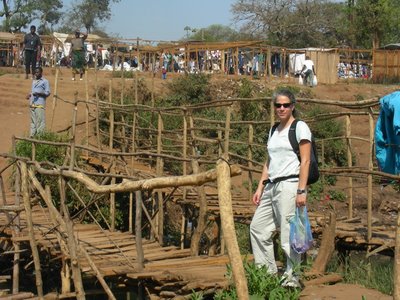
Lots of second-hand clothes, mainly from the
Even shoes...
Produce and lots of other 'necessities' can be plentiful in some markets…




Cooking oil are sold in either bags or bottles:
Ground corn (maize) flour is a staple in the Malawian diet:
Lots of fish:
Squid for sale in Mozambique
